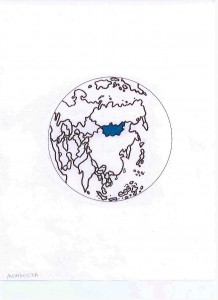MONGOLIA
A. THE COUNTRY
Mongol Uls is a landlocked country in East and Central Asia. It has
grassland, forests, three major mountain ranges, the great Gobi Desert
and is subject to climatic extremes. Government is a multiparty
democracy. Protests over corruption and failure to help the poor
plagues the government. While a traditionally pastoral and agricultural
economy, mining secures the highest proportion of foreign exchange.
Livestock and tourism trades are growing earners. A minority have
become rich, but many face gripping poverty. Large-scale emigration is
occurring as many thousands of Mongolians seek employment abroad.
B. THE PEOPLE
The population is ~2,725,000 and official language Khalkha Mongolian.
~90.9% are Mongolian (seven distinct dialects), ~6.6% Turkic, ~2.5%
Other (mainly Chinese). Economic difficulties have led to widespread
social upheaval, with crime, alcoholism and prostitution being common.
C. RELIGIONS AND CHRISTIANITY/PENTECOSTALISM
Buddhism, Shamanism and Islam are recognized as Mongolia’s main
religions, but certain religious freedoms are granted to all people,
with limited government interference in Christian work. In 1989 there
may have been only four Mongolian Christians, and today there are over
40,000 who meet in churches and groups.
~35.3% are Buddhist, ~32.4% Ethnoreligionist, ~26.48% Non-religious,
~4.1% Muslim, ~1.72% claim to be Christian. All figures are estimates,
since no national survey has been done, and distinctions between
Buddhism and Shamanism are blurred.
In the Christian category:
~0.98% are Independent, ~0.29% Protestant, ~0.03% Orthodox, ~0.03%
Catholic. Evangelicals represent ~1.2% of the population.
Charismatics represent ~0.8% and of those ~0.1% are Pentecostals.
Donna Siemens
References:
http://en.wikipedia.org
Operation World, Jason Mandryk. Colorado Springs: Biblica Publishing, 2010.

